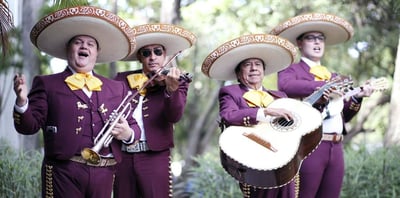Search for topics or resources
Enter your search below and hit enter or click the search icon.
September 18th, 2023
2 min read

Every year, from September 15th to October 15th, people across the United States come together to celebrate Hispanic Heritage Month. This commemorative period honors the rich cultures, traditions, and contributions of Hispanic and Latinx individuals to society.
From history and literature to art and music, this month-long celebration is a vibrant tapestry of diversity that deepens our understanding of the Hispanic community's impact on the nation's cultural fabric. In this article, we'll delve into the history of Hispanic Heritage Month, explore its significance, and highlight the integral role that Latin music plays in this captivating celebration.
The roots of Hispanic Heritage Month trace back to President Lyndon B. Johnson's declaration of Hispanic Heritage Week in 1968. The week-long celebration was later expanded to a month-long observance by President Ronald Reagan in 1988. The chosen dates hold particular significance as they encompass the independence anniversaries of several Latin American countries, including Costa Rica, El Salvador, Guatemala, Honduras, Nicaragua, Mexico, and Chile.

Hispanic Heritage Month serves as a tribute to the diverse backgrounds and accomplishments of Hispanic and Latinx communities. It's a time to reflect on the countless achievements, from contributions in politics and science to art and entertainment. The celebration not only highlights the historical significance of these achievements but also fosters a sense of unity among various Hispanic cultures that share similar struggles and triumphs.
A key element of Hispanic Heritage Month is the celebration of Latin music, which encapsulates the spirit, passion, and cultural richness of the Latinx community. From Mariachi and merengue to reggaeton and cumbia, the rhythms of Latin music reverberate through streets, homes, and gatherings during this festive month. Music acts as a unifying force, bridging the gaps between generations and connecting individuals from diverse backgrounds.
Latin music has evolved over centuries, blending indigenous, African, and European influences into a harmonious mosaic. From traditional folk tunes to contemporary genres, Latin music is a living testament to the creativity and resilience of the Hispanic and Latinx people. Genres like Mariachi, salsa, tango, bossa nova, and reggaeton have not only achieved international fame but have also become symbolic of Latin American culture.
During Hispanic Heritage Month, educational institutions, museums, and cultural organizations host events, workshops, and exhibitions that spotlight the contributions of Hispanic figures in history, arts, and sciences. These initiatives promote cultural awareness and appreciation, providing individuals with a deeper understanding of the heritage they are celebrating. You can find a list of events in your area on the Hispanic Heritage Month website.
Hispanic Heritage Month is more than a celebration; it's an opportunity to honor the diverse voices that have shaped the nation's cultural mosaic. Through music, art, and education, we connect with the heritage of Hispanic and Latinx communities, embracing their contributions to society. Latin music, with its infectious rhythms and vibrant melodies, stands as a testament to the unity and resilience of these cultures. As we commemorate this month, let's immerse ourselves in the rhythms of Latin music and embrace the shared histories that enrich our collective tapestry.
To help celebrate Hispanic Heritage Month in the classroom, check out our free Mariachi resources for teachers!
Adam is the Content Manager at pBone Music. This should mean that he’s the ideal person to write about himself, but he finds boasting in the third person a little awkward. He honed his word wizardry with a degree in English Language and Literature at the University of Leeds. He has since written copy for clients and businesses across the land, from awards to something beginning with “z”. He also spent a number of years as a musician. He has written pop songs and even jingles for kids, performed more first dances at weddings than you could shake a pBuzz at, and once played a gig for a pie company at The Etihad Stadium in Manchester. When he’s not reminiscing about those good old days, you might find Adam enjoying the football (although as an Everton fan, that can be difficult). He also loves spending time with his partner, Jen, and his family and friends, and sincerely hopes they feel the same way.
Topics: